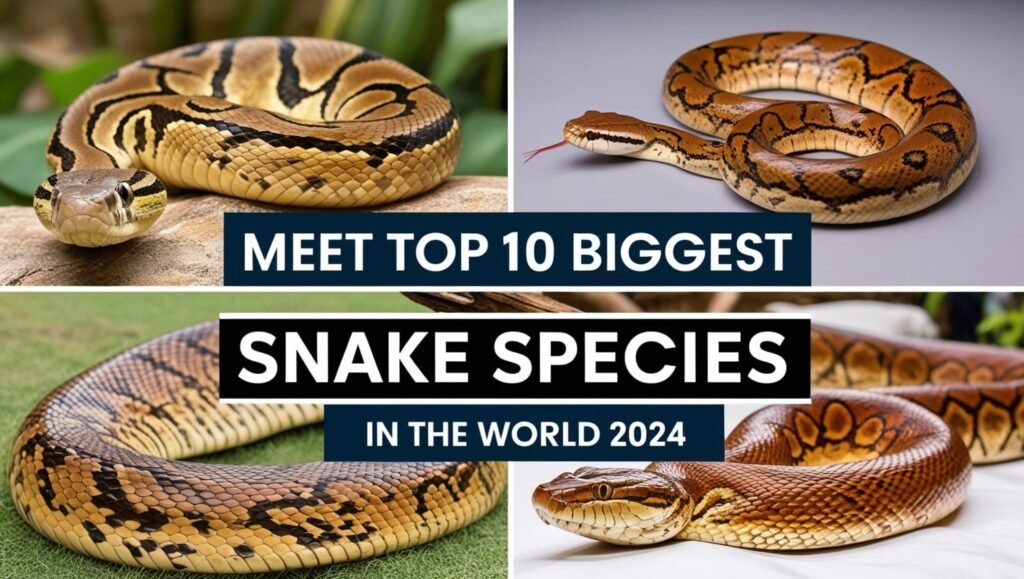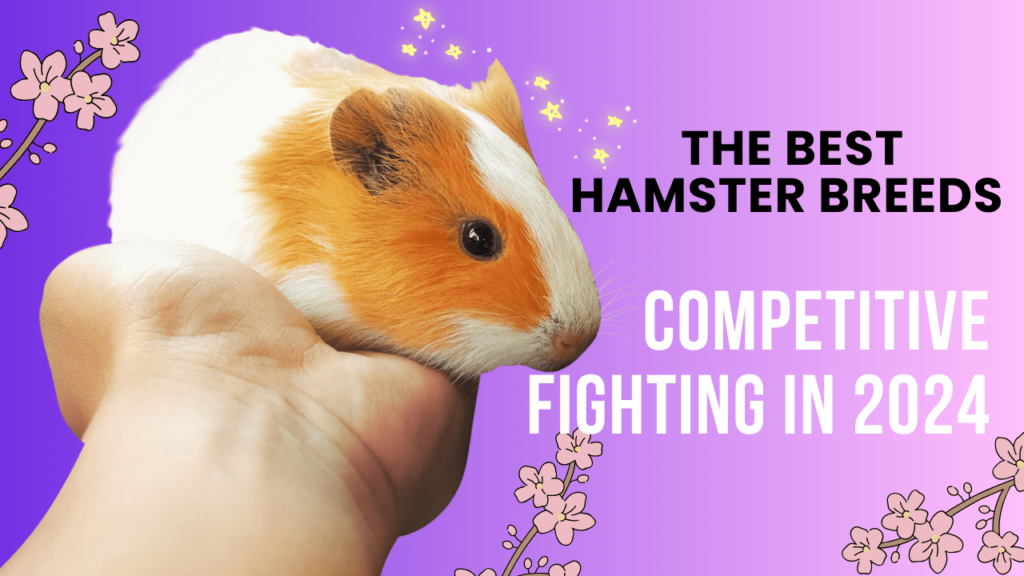Table of Contents
Introduction To Biggest Snake Species
Snake species have continuously captivated and panicked individuals to rise to a degree. Whereas a few may picture little, crawling animals, the world is domestic to a few species that develop to uncommon lengths. From enormous pythons to effective boa constrictors, the biggest wind species are genuinely awe-inspiring. In this article, we will present you with the top 10 biggest snake species in the world, positioned by their length, and clarify why these monsters play pivotal parts in their ecosystems.
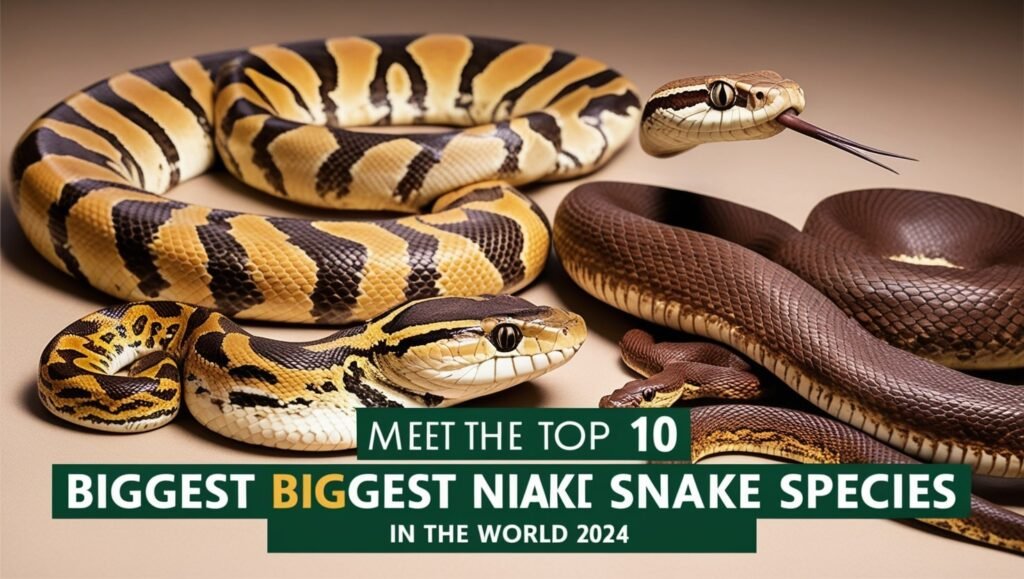
The Reticulated Python – The Longest Snake Species
Outline of the Reticulated Python
When it comes to sheer length, the Reticulated Python holds the crown as the longest snake species in the world. Local to Southeast Asia, this species flourishes in rainforests, meadows, and indeed a few urban regions. Known for its striking reticulated (net-like) design, this wind species can develop to astounding lengths.
How Huge Can the Reticulated Python Get?
The Reticulated Python can reach up to 30 feet, making it not as it were the longest wind species but moreover one of the scary. There have been reports of examples coming to over 32 feet, even though these are uncommon. Despite their measure, these snakes are not ordinarily forceful towards people unless threatened.
Green Anaconda – The Heaviest Wind Species
Understanding the Green Anaconda
While the Green Anaconda may not be the longest, it is certainly the heaviest wind species on Soil. Found fundamentally in the swamps and streams of South America, these mammoths are inconceivably solid and can weight over 500 pounds.
Estimate and Quality of the Green Anaconda
The Green Boa constrictor can be 29 feet long. Its titanic size and weight make it an amazing tracker. This wind is known for its quality, utilizing its solid body to contract and stifle its prey, which can incorporate expansive creatures such as deer and caimans.
Burmese Python – A Prevalent Monster Snake Species
Burmese Python Characteristics
The Burmese Python is one of the most well-known huge wind species, particularly in the pet exchange. Nearby to Southeast Asia, this species can be tracked down in the two forests and lowlands. Its calm disposition has made it prevalent among reptile devotees, despite its size.
Adjustment and Environment of the Burmese Python
The Burmese Python can be 23 feet in length, making it one of the best snake species on earth. Though they are not generally so overpowering as the Green Anaconda their long, thin bodies license them to travel through an arrangement of circumstances, from water to land.
Indian Python – A Lesser-Known Expansive Wind Species

Living Space and Proportion of the Indian Python
The Indian Python may not be pretty much as famous as its Burmese cousin, yet it is as yet one of the greatest breeze species on earth. Found in the Indian subcontinent, this species can grow up to 20 feet in length.
The Part of the Indian Python in Its Ecosystem
The Indian Python plays a significant part in its biological system by making a difference in controlling the populaces of little warm-blooded creatures and winged creatures. Despite its estimate, this species is moderately resigned and will as it were strike if provoked.
African Shake Python – The Greatest Snake Species in Africa
Key Highlights of the African Shake Python
As the greatest breeze species in Africa, the African Shake Python orders respect. It can develop up to 20 feet long and is known for its forceful personality. This species can be found in an assortment of territories, including savannas, woodlands, and close rivers.
The Climate and Conduct of the African Shake Python
The African Shake Python is an effective predator that nourishes a wide run of creatures, including gazelles, monkeys, and indeed crocodiles. Its capacity to adjust to diverse situations makes it a prevailing constraint in the African wilderness.
Amethystine Python – The Biggest Wind Species in Australia
What Makes the Amethystine Python Unique?
The Amethystine Python, besides being known as the spotless python, is the greatest breeze species in Australia. Developing up to 20 feet long, it is recognized for its shining, amethyst-colored scales, which provide it a special appearance.
Dissemination and Behavior of the Amethystine Python
This python is tracked down in northern Australia, Papua Unused Guinea, and Indonesia. It flourishes in rainforests and meadows, where it preys on winged creatures, warm-blooded animals, and reptiles. Its expansive measure makes it a summit predator in its environment.
Yellow Anaconda – A Littler Cousin of the Green Anaconda
Yellow Anaconda Measure and Characteristics
While not as huge as the Green Anaconda, the Yellow Anaconda is still an amazing species. It can develop up to 15 feet long and is local to South America. Not at all like its bigger cousin, the Yellow Anaconda is more spry, making it a talented seeker in its swampy habitat.
How the Yellow Anaconda Compares to Its Bigger Relatives
Regardless of being more modest, the Yellow Boa constrictor is as yet a great hunter. It employments its effective body to choke prey, much like the Green Anaconda. This species chases feathered creatures, angels, and little mammals.
Boa Constrictor – A Flexible and Huge Snake Species
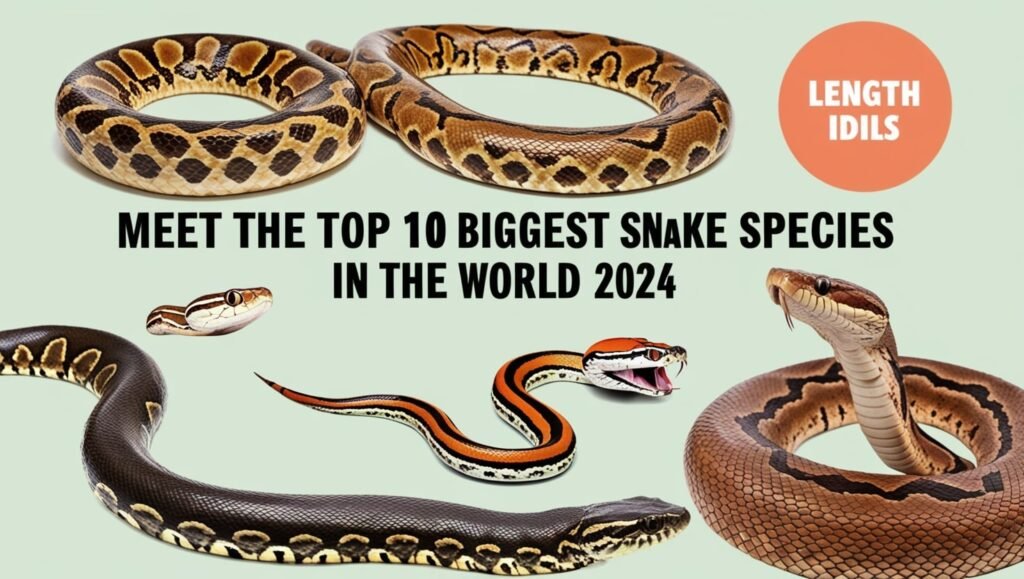
Estimate and Flexibility of the Boa Constrictor
The Boa Constrictor is one of the most adaptable epic snake species on the planet. It very well may depend on 13 feet in length and is found in a gathering of living spaces, from rainforests to deserts. Its adaptability has allowed it to thrive in both wild and metropolitan conditions.
Part of the Boa Constrictor in Its Living Space
The Boa Constrictor is a basic part of its organic framework, controlling the general populations of rodents, winged animals, and other little animals. Its ability to thrive in particular circumstances makes it one of the most adaptable snake species.
Ruler Cobra – The Longest Venomous Snake Species
The Forcing Measure of the King Cobra
The King Cobra is the longest venomous snake species, coming up to 18 feet long. Found in Southeast Asia and portions of India, this species is known for its strong toxic substance and astounding size.
Poison and Measure: How the Lord Cobra Survives
The King Cobra employments its length and poison to overwhelm prey. Despite its fearsome notoriety, this wind species ordinarily maintains a strategic distance from human contact unless debilitated. It essentially eats less comprises other snakes, making it a special predator in the wind world.
Dark-Spotted Anaconda – A Seldom-Seen Mammoth Snake Species
The Dark-Spotted Anaconda’s Measure and Habitat
The Dark-Spotted Anaconda is one of the lesser-known mammoth snake species. Found in South America, this species can develop up to 10 feet in length. It favors swampy, riverine situations, much like its bigger anaconda cousins.
Why the Dark-Spotted Anaconda Is a Once in a while Seen Species
The Dark-Spotted Anaconda is more slippery than other anaconda species, somewhat due to its smaller measure and more inaccessible territory. It is an exceedingly gifted seeker, essentially bolstering on an angle and little mammals.
How Do These Snake Species Compare to Other Huge Snakes?
Contrasts Between the Biggest Snakes and Other Wind Species
When comparing the biggest snake species to others, it’s clear that the measure offers certain points of interest. Bigger snakes can take down greater prey, which permits them to flourish in situations where smaller snakes might struggle.
Developmental Preferences of Estimate in Wind Species
Size plays a significant part in the survival of these snake species. Bigger snakes frequently have less common predators and can get to a more extensive assortment of prey. In any case, being huge moreover comes with challenges, such as finding sufficient nourishment and reasonable habitats.
The Part of Snake Species in Ecosystems
Significance of Expansive Wind Species in the Nourishment Chain
Large snake species play an imperative part in their biological systems by controlling populaces of other creatures. By keeping rat and feathered creature populaces in check, they offer assistance to keep up the adjust in their environments.
How Estimate Influences the Ecosystem
The measure of these sake species permits them to fill a one-of-a-kind specialty in their environments. Without these huge predators, smaller creature populations seem to develop out of control, leading to a lopsidedness in the nourishment chain.
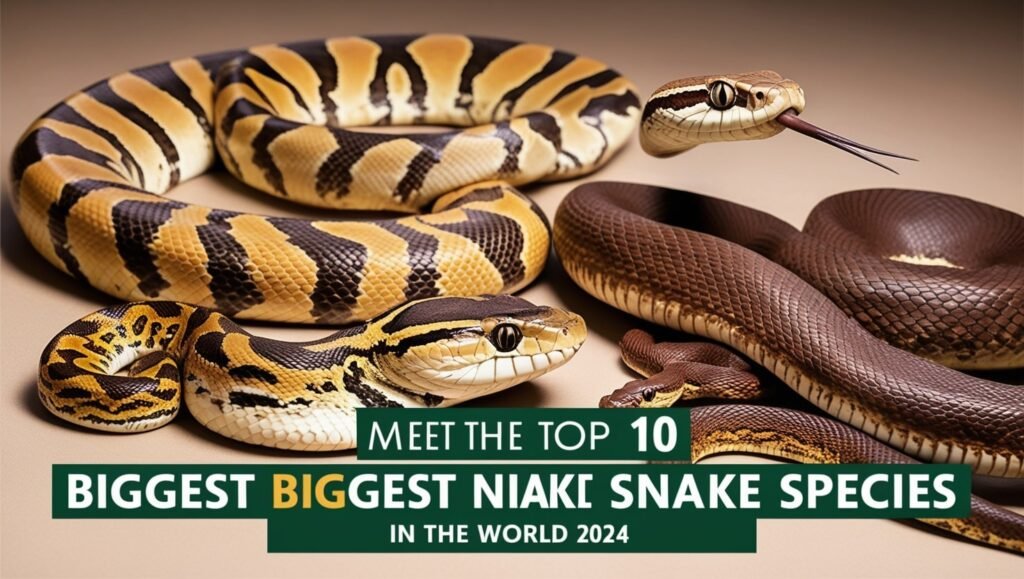
Preservation Endeavors for Huge Snake Species
Challenges in Ensuring Expansive Snake Species
Many of the world’s biggest snake species confront dangers from territory misfortune, chasing, and illicit pet exchange. Preservation endeavors are basic to secure these species and guarantee their survival for future generations.
What Can Be Done to Offer Assistance to Secure These Wind Species?
To secure these wonderful snake species, protectionists are working to protect their environments, direct the pet exchange, and teach the open about the significance of these creatures. Supporting preservation organizations and supporting natural life assurance laws are key steps that everybody can take.
Conclusion
In the realm of snake species, measure truly things. The beat 10 biggest snake species in the world, from the colossal **Reticulated Python** to the slippery Dark-Spotted Anaconda, are not as it were captivating animals but play imperative parts in their environments. Understanding and securing these mammoths is significant for keeping up with the adjust of nature.
FAQs
What is the best snake species on earth?
- The Reticulated Python is the longest snake species on earth, with several people coming more than 30 feet in length.
How huge can the Green Anaconda get?
- The Green Anaconda can develop up to 29 feet and is the heaviest wind species, weighing over 500 pounds.
Are expansive wind species unsafe for people?
- Whereas these snake species are huge and capable, they regularly dodge people unless incited. Assaults are rare.
Why are expansive snakes critical to the biological system?
- Huge snake species offer assistance in controlling populaces of smaller creatures, playing a pivotal part in keeping up the environmental balance.
How can we ensure these huge wind species?
- Securing their common living spaces, directing the pet exchange, and supporting preservation endeavors are fundamental for the survival of these snake species.

